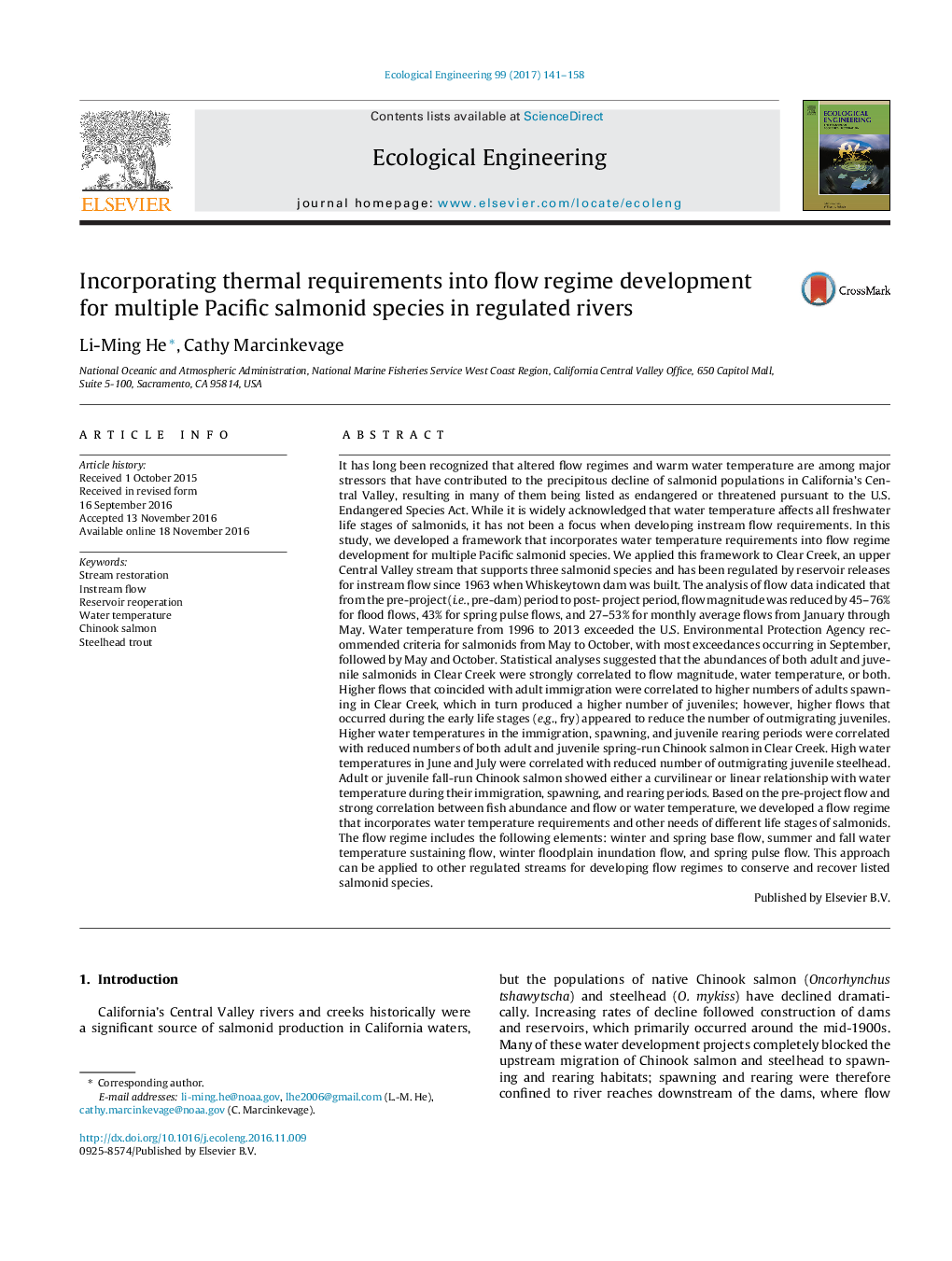| Article ID | Journal | Published Year | Pages | File Type |
|---|---|---|---|---|
| 5743980 | Ecological Engineering | 2017 | 18 Pages |
â¢Salmonid abundance in a regulated river is correlated to stream flow and temperature.â¢Salmonid temperature requirements must be considered in flow regime development.â¢The approach can be applied to other regulated rivers for multiple salmonid species.
It has long been recognized that altered flow regimes and warm water temperature are among major stressors that have contributed to the precipitous decline of salmonid populations in California's Central Valley, resulting in many of them being listed as endangered or threatened pursuant to the U.S. Endangered Species Act. While it is widely acknowledged that water temperature affects all freshwater life stages of salmonids, it has not been a focus when developing instream flow requirements. In this study, we developed a framework that incorporates water temperature requirements into flow regime development for multiple Pacific salmonid species. We applied this framework to Clear Creek, an upper Central Valley stream that supports three salmonid species and has been regulated by reservoir releases for instream flow since 1963 when Whiskeytown dam was built. The analysis of flow data indicated that from the pre-project (i.e., pre-dam) period to post- project period, flow magnitude was reduced by 45-76% for flood flows, 43% for spring pulse flows, and 27-53% for monthly average flows from January through May. Water temperature from 1996 to 2013 exceeded the U.S. Environmental Protection Agency recommended criteria for salmonids from May to October, with most exceedances occurring in September, followed by May and October. Statistical analyses suggested that the abundances of both adult and juvenile salmonids in Clear Creek were strongly correlated to flow magnitude, water temperature, or both. Higher flows that coincided with adult immigration were correlated to higher numbers of adults spawning in Clear Creek, which in turn produced a higher number of juveniles; however, higher flows that occurred during the early life stages (e.g., fry) appeared to reduce the number of outmigrating juveniles. Higher water temperatures in the immigration, spawning, and juvenile rearing periods were correlated with reduced numbers of both adult and juvenile spring-run Chinook salmon in Clear Creek. High water temperatures in June and July were correlated with reduced number of outmigrating juvenile steelhead. Adult or juvenile fall-run Chinook salmon showed either a curvilinear or linear relationship with water temperature during their immigration, spawning, and rearing periods. Based on the pre-project flow and strong correlation between fish abundance and flow or water temperature, we developed a flow regime that incorporates water temperature requirements and other needs of different life stages of salmonids. The flow regime includes the following elements: winter and spring base flow, summer and fall water temperature sustaining flow, winter floodplain inundation flow, and spring pulse flow. This approach can be applied to other regulated streams for developing flow regimes to conserve and recover listed salmonid species.
